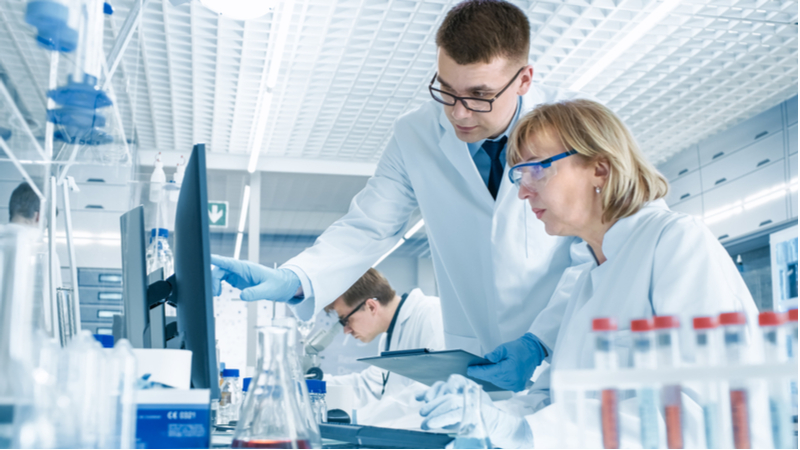Andreas Wallnöfer spent over 20 years working on drug development at Roche before moving to BioMedPartners to apply his expertise to biotech investment. At our recent Labiotech Refresh event in Zurich, he explained why good clinical trial design can be key to a biotech’s success.
Wallnöfer was one of the pioneers of ‘proof of concept’ trials. In the 80’s, drug developers began to realize that the failure of a number of clinical trials could be attributed to poor assessment of how the drug being tested interacted with the human body and vice versa. To attempt to rectify this, more in-depth analysis of drug metabolism and research on the links between drug dose and response were given a much higher profile in clinical trial design, creating the ‘proof of concept’ idea.
“I think this concept started from my clinical fellowship, which I spent at the University of Leiden. We were trying very rapidly, in early clinical trials, to profile molecules not only for pharmacokinetics, which was the standard in those days, but we were looking for early readout markers. In technical language, that is now called PK/PD assessment,” explained Wallnöfer.
Revolutionizing clinical trial design
The aim of these trials was to not only assess proof of concept, but also to profile the patients, with the aim of improving the likelihood of success by having better-targeted therapies. Since Wallnöfer began working at Roche, personalized medicine really evolved as a field thanks to the evolution of affordable and efficient next generation sequencing and advanced data analysis.

“What you see now is that you really can get much better information on patient diagnosis, you can follow the outcome of therapies much better, there is real-life data coming in. This is changing fundamentally the way we are going to do clinical trials.”
The traditional way for a drug to be given market approval is to complete a phase III trial that shows that the drug being tested has a positive and statistically significant impact on disease progression or patient survival. However, Wallnöfer believes that this approach is changing.
“In the old days, the pharma companies were in total control of the datasets. They could assess how good the drugs really were. In the new world, you will have real-life data and constantly have feedback loops about what’s really happening. The ownership of that data is not only with the company anymore. It can be with insurances, it can be regulators, it’s everywhere. That will make things much more demanding for keeping drugs on the market.”
What makes a perfect clinical trial?
One of the things that Wallnöfer brings to his current role at BioMedPartners is his extensive experience of drug development and clinical trial design, which he now shares with biotech startups to help them grow their business.
“I think it’s an art to design meaningful clinical trials. It’s probably one of the privileges or benefits I had through my training, but also during the time at Roche. We had really well-designed challenge trials that were delivering the answers to the scientific hypothesis,” he explained.
“Of course, one cannot compare this necessarily to every biotech company that is much more financially constrained, but it’s even more important for these companies to design their program in a way that you get answers. Unfortunately, you still see a lot of not well-designed trials.”

Wallnöfer has seen a variety of issues with clinical trial design that can ultimately make or break a company, particularly if they are a small biotech with a commensurately modest pipeline of drugs in development. For example, having an unclear trial hypothesis, an unrealistic expectation of what the endpoints of the trial should be and when they will be reached, not involving the right clinical people with knowledge appropriate to the trial and patients, and not using the correct statistics for analysis purposes.
“There are so many ways in which you can introduce bias and invalidate your trials. Last, but not least, it’s very important to understand your own drug… Many trials are run at the wrong dose, with the wrong endpoint, insufficiently powered, or not big enough.”
While working at Roche, Wallnöfer’s team licensed a prospective cancer drug targeting a specific tumor mutation from a biotech company. The initial clinical trial failed, but the Roche drug development team redid the trial, resulting in notable success.
“They treated everybody with or without the mutation and obviously, it’s very difficult to expect an effect of a drug when people did not have a mutation if you have a mutation inhibitor. That was one problem. The other problem was they had not optimized their formulation, so the drug was poorly absorbed, and with the exposure that they had in the trial it was impossible to expect an effect. This was a trial that from the very beginning was a total waste of money. They were treating the wrong patients with a formulation that never ever could be efficacious.”
Encouraging innovation or clinging to old ideas?
Since moving over to investment, Wallnöfer is now using his extensive clinical knowledge to advise new biotechs and academic spin-out companies on how best to design their own trials. Also, how to find their feet in the world of business, something that can be challenging for scientists and clinicians.

He emphasizes that while the US is definitely ahead in encouraging scientists to also be entrepreneurs, some places in Europe — such as Switzerland — are not far behind.
“Good tech transfer offices are fundamental, but I think they are probably in a difficult situation mediating between the intrinsic university administration and the need of entrepreneurial solutions and dealing with VCs,” acknowledges Wallnöfer.
“You see large differences. There are tech transfer offices that are really very good, smooth, cooperative, and others where you think that their job is to block innovation.”
He believes that the culture in a country can have a real impact on how successful the translation of scientific research into businesses can be.
“In the US, it is seen as a prestigious thing if you are an academic and an entrepreneur. In many European countries, partly even in Switzerland, it’s kind of a contamination of your academic integrity when you start talking to business people. It’s all in this cultural space where you find the difference.”
BioMed is currently building up a third life science investment fund, after launching two earlier funds that both proved successful. Wallnöfer says that the most important thing he looks for in a potential investment is innovation.
“What I try to do is to find true innovation. I believe that ultimately, all the programs that are truly innovative have a high potential. The risk in R&D is high anyway. If you take something which looks more secure, but is not so promising, even if it works, the upside is limited. You have to take more risk, go for the truly innovative thing. Then, if that works… it actually becomes truly exciting.”
Check out the video of the Labiotech Refresh fireside chat in Zurich with Andreas below:
Images via Shutterstock





